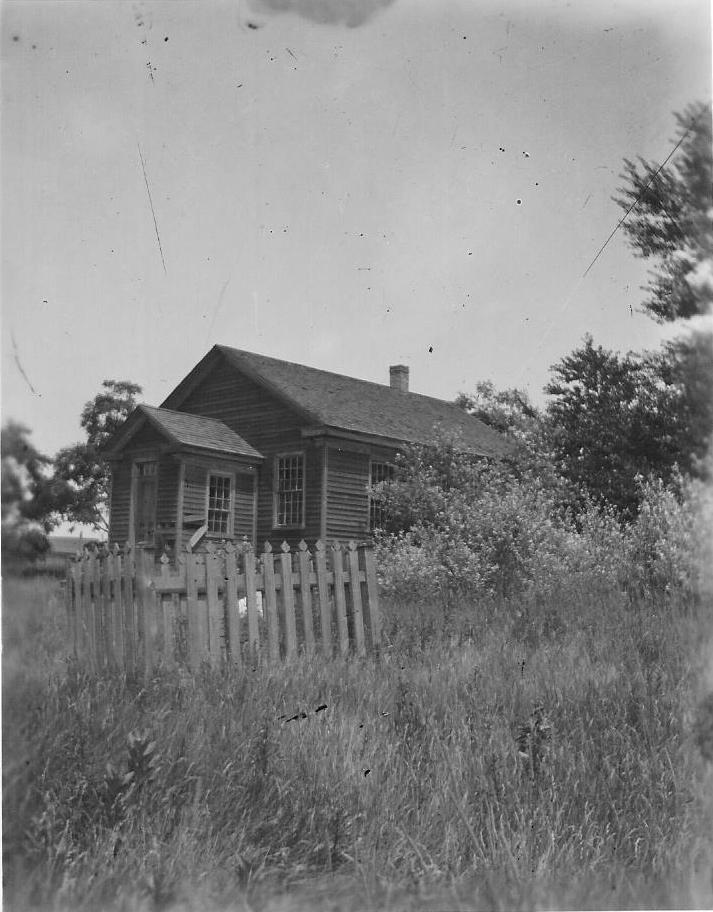
In 1843, Thomas Sutherland, a prominent figure in Moore Township history, went to England for a visit. He returned to Canada, bringing with him a friend from Edinburgh – the Reverend Archibald Geikie, a minister of the Congregational Church. Thomas Sutherland was very instrumental in establishing the first Episcopal Church in the area. Occasional Presbyterian services were held in Sutherland’s orchard by Rev. George Cheyne of Amherstburg, but in 1843 the cornerstone for Sutherland’s Trinity church was laid. It was a mark of an early ecumenical outlook that Rev. Geikie was the first Sunday School superintendent in that Anglican Church.
Gradually, Rev. Geikie became settled in the Mooretown area. He bought a farm from Henry Little which consisted of Lot 37. The system of buying land by the 100 acre lot was a shock to Rev. Geikie who was not used to such vast expanses of uninhabited land. It was the original intention of Rev. Geikie to farm the land with his three grown sons, but his scholarly and gentle upbringing proved unequal to the task. Rev. Geikie wrote a book on early life in Canada which detailed the conditions and habits of daily life early in Moore Township’s history.
Rev. Geikie was zealous in his concern for the spiritual and social welfare of his fellow pioneers. Besides assisting in Trinity Anglican church, Rev. Geikie would hold Latin classes for the young men of the area, lead church services in his barn, and walk out to the 8th concession to hold services in the home of Joseph Anderson (thus establishing the roots of Knox Presbyterian). This would be a sizable task since it involved a 7-mile trek each way through swamp and wilderness. On occasion he would go with his son to Kettle Point by canoe in order to evangelize to the Indigenous peoples there.
Although the Geikies continued to be close friends with the Sutherlands and the Reverend remained active in his travels and preaching, he began to contemplate the possibility of establishing a church of his own denomination in the area. He wrote to his father requesting his support for these aspirations and plans. His father received the letter while he was preparing to go out and dine with friends in Edinburgh. Upon his arrival he proceeded to read his son’s letter aloud to the whole company gathered there. Subsequently the friends subscribed £100 to Rev. Geikie’s endeavor. With this generous assistance, Rev. Geikie was able to build the Congregational church of Moore on the northeast corner of River Rd. (Emily St.) and Baby’s Line (Moore Line). This church was the first public building in the village of Mooretown and was erected on an acre of land donated by Rev. Geikie for the purpose of a church and a cemetery. The church was built in 1847 by George Wight. It was a frame structure which had two rows of seats and a centre aisle. There were three windows down each side, a pulpit which consisted of a shelf built out from the wall that encircled the pulpit platform and was reached by a flight of stairs on either side. The pulpit lent a distinguished air to the church interior since it was upholstered in red damask with a deep fringe.
The new little church only prospered for a short time before misfortune struck its pastor. Rev. Geikie’s wife died very suddenly in 1848. She was the first one to be buried in the cemetery of the Congregational church. The troubles of the Geikie family did not stop there. Rev. Geikie’s eldest son had married Sara Johnston and had moved away to be a minister at Galt. He was very successful there; however, only a short time after the death of his mother, Archibald Geikie Jr.’s wife also passed away suddenly. He brought her body home through a snowstorm so that she too could be buried in the cemetery at home. There are memorial stones for both women beside the present Presbyterian Church in Mooretown.
Partly because of these tragic events that occurred in the family, Rev. Geikie decided to leave the area. He accepted a call to Bond St. Congregational Church in Toronto after only 18 months of service in his first community. He moved with his family to Toronto in 1849. After his post there he moved to Connecticut where he served until his death in 1872.
When the Geikie family left the Moore area, it meant an end to the Congregational influence there. The church building remained empty for several years until the Presbyterian minister, Rev. Gauld, arrived in 1856. The Presbyterians began worshipping in the old Congregational church with Rev. Geikie’s approval until they bought it in 1885. When the Presbyterians eventually erected their own building in 1891, Rev. Geikie’s grandson Walter, the dean of Trinity Medical College in Toronto, was present at the dedication ceremony. He presented the church with a memorial oiled glass window in memory of his grandfather.
Remains of the first cemetery still exist today immediately to the west of Moore Museum. The original building of the Congregational church became home to several township families as 1220 Elizabeth Street in Mooretown.

